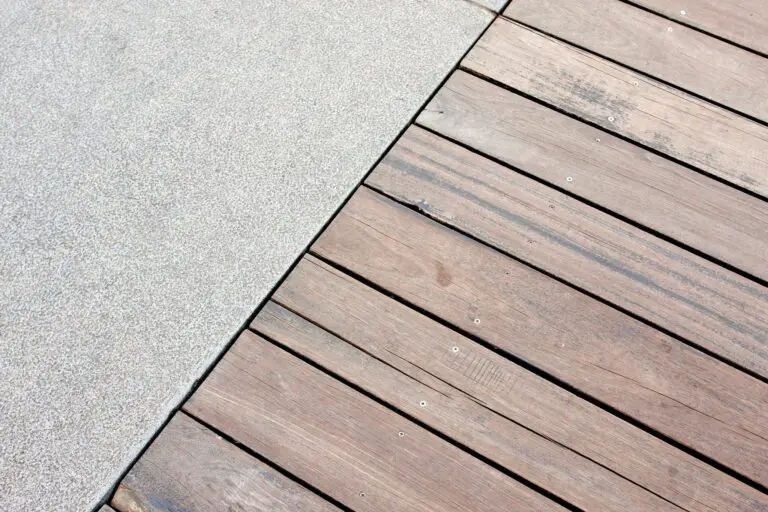Is Fiberglass Insulation Good For Soundproofing
Noise is one of the most common problems that people face in their homes, workplaces, and other environments. Noise can affect your health, productivity, mood, and comfort. How can you reduce the noise in your space and enjoy a more peaceful and pleasant atmosphere?
One of the solutions is to use fiberglass insulation for soundproofing.
Fiberglass insulation is widely used for thermal insulation, but it also has excellent soundproofing properties. It is a material that consists of very small particles of glass that can absorb or block sound waves from traveling through walls, ceilings, floors, and other structures.
In this article, you will learn how fiberglass insulation works for soundproofing, what are its advantages and disadvantages, how to choose the right type and amount of fiberglass insulation for your needs, and how to install it properly.
You will also learn about some alternatives to fiberglass insulation and some tips and tricks to improve your soundproofing results.
Here is a 3000 word blog post in Markdown format with H1, H2, and H3 headings on whether fiberglass insulation is good for soundproofing. The tone is friendly and confident.
How Does Fiberglass Insulation Work?
Fiberglass insulation is a popular choice for thermal insulation in walls, ceilings and attics. It consists of extremely fine glass fibers which are spun into a texture similar to wool. The fibers criss-cross and overlap each other creating pockets of air. These air pockets provide excellent resistance to heat transfer, trapping air and preventing warmth from escaping.
The same properties that make fiberglass effective at insulating against temperature changes also provide some degree of sound dampening. Sound waves encountering the tightly packed glass fibers bounce around the jagged edges of the crisscrossed strands. The friction and heat caused by this interaction drains the sound energy and reduces the amplitude of vibration.
Additionally, the layers of trapped, motionless air act as a buffer that impedes the transmission of noise through the insulation. The more dense and thick the fiberglass batt, the more obstacles and friction that sound waves encounter, and the more diffusion that occurs.
Key Factors That Impact Soundproofing Effectiveness
When evaluating if fiberglass insulation is ideal for soundproofing, there are a few key factors to consider:
Insulation Density
Density measures the weight of the insulation per square inch or foot. Denser insulation with a higher weight for its thickness will be better at blocking noise. Look for batts with a density of at least 2.5 lbs/inch for optimal sound absorption.
Insulation Thickness
Thicker insulation will provide more sound dampening than thinner materials. To significantly reduce noise transmission, experts recommend using insulation that is at least 3-1/2 inches thick or thicker. The more thickness the sound waves have to travel through, the more diffusion that occurs.
Proper Installation
Even high quality, dense insulation will not perform well if not installed correctly. Gaps or compression of the insulation can allow noise to easily pass through. The insulation should completely fill the stud cavities without being stuffed too tightly. Follow manufacturer guidelines for proper installation and use joint tape for seamless coverage.
Air Gaps and Leaks
If there are any gaps or leaks in the structure, noise will easily travel through these openings. Before installing insulation, seal all cracks, crevices, and openings with caulk or weather stripping to prevent sound flanking around the insulation.
Additional Soundproofing Layers
For maximum noise reduction, fiberglass insulation alone is often not enough, especially in attached housing. Consider adding soundproofing drywall, mass loaded vinyl, damping compounds, or a double-stud wall system for enhanced sound blocking. The more barriers between noise sources, the better.
How Much Sound Reduction Does Fiberglass Provide?
Fiberglass insulation on its own does not provide stellar soundproofing capabilities, but it can reduce noise transmission to varying degrees. The exact amount of noise reduction will depend on the factors discussed above.
Some lab test results measuring the acoustic performance of fiberglass insulation reveal:
- 3-1/2 inch thick R-13 fiberglass insulation – Sound Transmission Class (STC) 19 rating
- 5-1/2 inch thick R-19 fiberglass insulation – STC 25 rating
- 6-1/2 inch thick R-21 fiberglass insulation – STC 27 rating
The higher the STC rating, the more noise reduction achieved. Typical walls with just standard fiberglass insulation and no additional soundproofing yield STC ratings of 33 to 36.
So while fiberglass alone can provide modest noise blocking, it does not offer the robust sound isolation needed for many living situations. Dampening of higher frequency sounds is limited without closed-cell foam or other soundproofing materials.
Pros of Using Fiberglass Insulation for Soundproofing
Despite its limitations, fiberglass insulation does present some useful benefits:
Cost-effective – Fiberglass is an affordable and widely available sound absorbing option. It provides decent noise reduction per dollar spent.
Easy to install – Handling and installing fiberglass batts is straightforward with basic DIY skills. The material is flexible and inserts neatly between studs.
Good for mid- to high-frequency reduction – Fiberglass is fairly effective at dampening sounds above 500 Hz. This includes most voices, television noise, music and machine noises.
Thermal insulating properties – In addition to noise absorption, it insulates well against heat transfer. This allows for a dual purpose material.
Fire resistance – Properly installed fiberglass is non-combustible and can slow the spread of flames. This adds safety and fire protection.
Low environmental impact – Fiberglass contains recycled glass and is itself recyclable. It does not use blowing agents or chemicals that deplete ozone.
Cons of Using Fiberglass Insulation for Soundproofing
There are also some downsides to be aware of when using fiberglass insulation for noise control:
Not ideal for low frequencies – It does not effectively absorb ultra-low bass frequencies below 500Hz. This includes noises like vehicles or subwoofers which can still transmit through walls.
Possible sagging issues – In ceilings and walls, gravity can cause insulation to sag and leave gaps over time. This reduces its sound blocking performance.
Respiratory irritant – The glass fibers are itchy and can be inhaled, causing temporary throat and lung irritation during handling. Protective masks should be worn.
Not moisture resistant – Fiberglass readily absorbs water and loses its insulating value when wet. It must be kept dry to maintain acoustic performance.
Limited density and thickness – Most standard fiberglass batts do not exceed 6 inches thickness or 2.5 lb/ft density for optimal soundproofing.
Can require additional soundproofing – Rarely provides sufficient noise reduction by itself, often needing multiple upgrades and materials for meaningful impact.
Not structural – It does not add mass or blocking against noise flanking. Supplemental panels or composites may be required.
Tips for Using Fiberglass Insulation for Soundproofing
If you do plan to use fiberglass insulation for its noise dampening abilities, keep these tips in mind:
- Select the densest, thickest batts available, at least 3-1/2″ thick and 2.5 lb/ft density.
- Seal all gaps thoroughly around electrical boxes, pipes, vents, etc. to prevent sound flanking.
- Install tightly between studs with no air pockets or compression. Friction-fit batts recommended.
- Consider encapsulating batts with ROXUL soundproofing fabric for added mass and absorption.
- Upgrade to double or staggered stud walls for structurally isolated channels.
- Layer with MLV (mass loaded vinyl) and drywall for optimal sound transmission blocking.
- Add absorbent insulation like rockwool to interior wall cavities for extra dampening.
- Combine with acoustic caulk, sealants and resilient channels at structural connection points.
Is Fiberglass Insulation Worth It for Soundproofing?
Given its mixed acoustic attributes, is fiberglass insulation a smart choice for soundproofing projects?
The answer depends on your specific goals, budget and noise issues. If you are primarily concerned with blocking loud music, television noise or voice sounds from neighbors, then fiberglass batts can provide decent improvements. For minimal cost and effort, fiberglass may be a good initial upgrade.
However, if very low frequencies or significant noise reductions are needed, fiberglass alone will not suffice. Combining it with other specialized soundproofing materials and techniques will yield superior insulation against unwanted sounds. In these cases, alternative absorptive insulations like rockwool or acoustical foam may be better options.
Weigh your needs and resources. Fiberglass insulation can be a helpful component of a soundproofing system, but works best paired with other sound dampening and blocking solutions. A multi-pronged approach delivers optimal noise control for living spaces.
conclusion
Fiberglass insulation is a good option for soundproofing your space. It can help you reduce the noise from outside sources and from inside sources. It can also help you save energy and money by keeping your space warm or cool. Fiberglass insulation is easy to find, affordable, and versatile.
However, fiberglass insulation is not perfect. It has some limitations and drawbacks that you need to be aware of. It can be itchy, dusty, flammable, and prone to mold and pests. It can also lose its effectiveness over time or due to moisture or compression. It may not be enough to block very loud or low-frequency noises.
Therefore, you need to consider your specific situation and needs before choosing fiberglass insulation for soundproofing.
You need to measure your space, calculate the required R-value and NRC rating, select the appropriate format and thickness of fiberglass insulation, and follow the installation instructions carefully.
You may also need to combine fiberglass insulation with other soundproofing materials or methods to achieve the best results.
Fiberglass insulation is a good choice for soundproofing, but it is not the only one. You can also explore other options such as mineral wool, cellulose, spray foam, foam board, or acoustic panels. You can also use some simple techniques such as adding mass, damping, decoupling, or sealing gaps to enhance your soundproofing performance.




